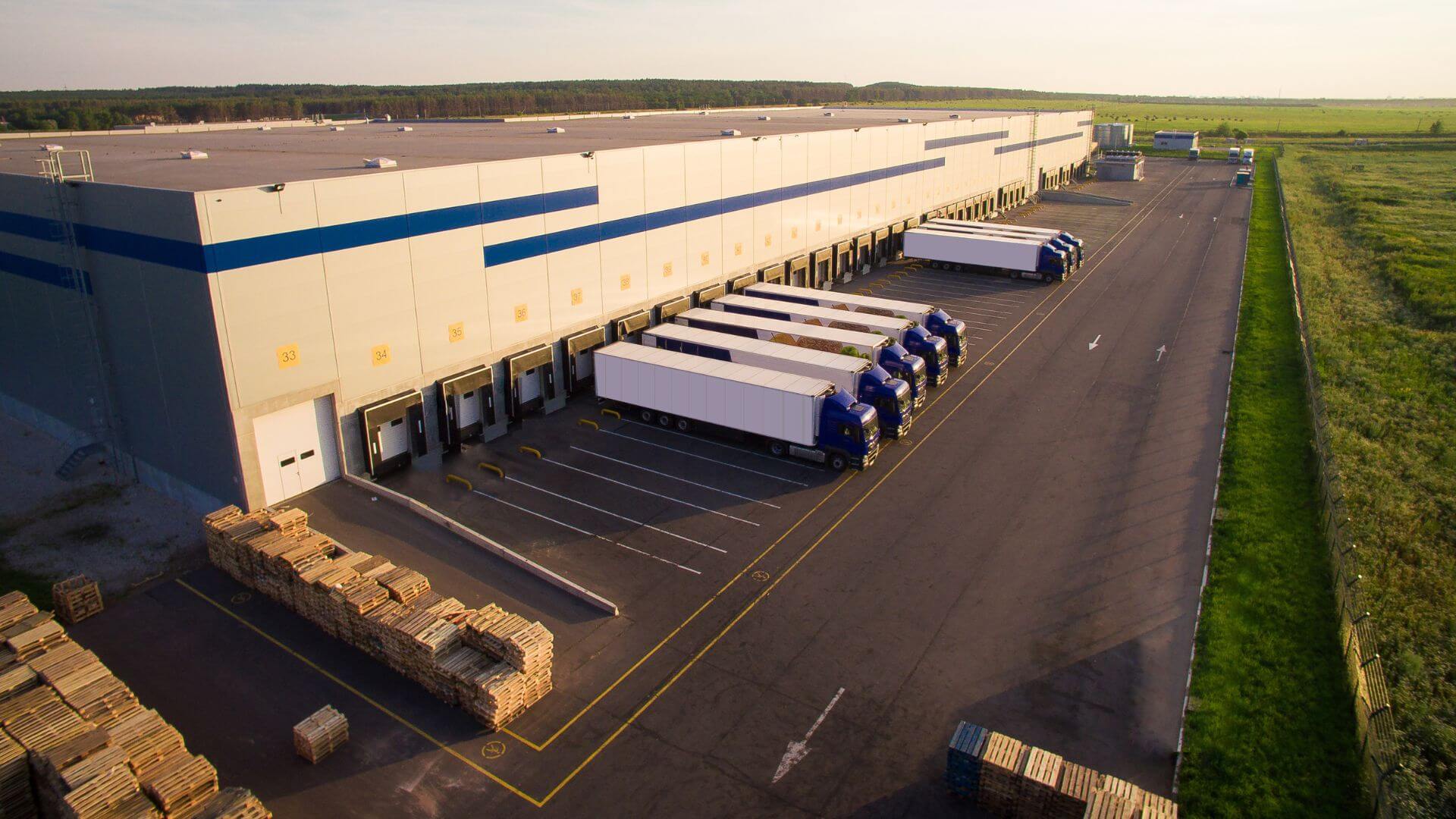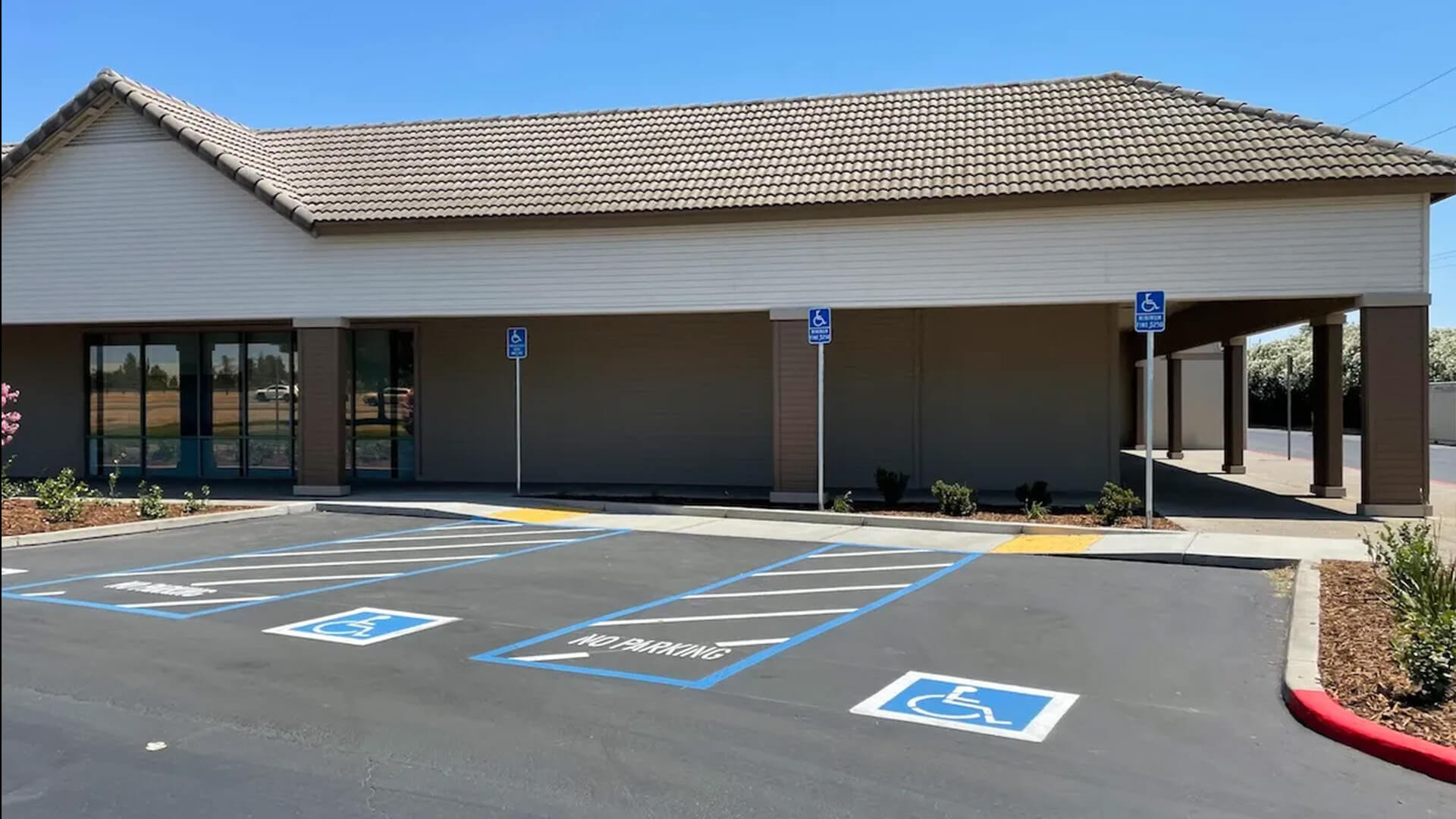
Heavy Loads and Zero Downtime: How to Keep Industrial Pavement Operational

Dock 4 is down again.
The turning radius has rutted so badly that forklifts bounce, pallets wobble, and the production team has to reroute traffic mid-shift.
Every lost hour ripples through shipping, schedules, and safety.
But you don’t have to wait for a full repave to get control. This guide shows how to recognize early warning signs in your yard pavement, where to use asphalt versus concrete (and when to mix both), and how to build a preservation plan that keeps your operations running 24/7.
What Fails in Industrial Yards (and What It’s Telling You)
Pavement in industrial yards takes punishment far beyond what parking lots ever see.
Forklifts pivot in tight spaces, trailers grind against aprons, and heavy axles concentrate load at every stop and turn.
Over time, that stress leaves clues.
- Rutting – Those wheel depressions in your drive lanes or turning radii signal the subgrade or asphalt mix is failing under load. Left alone, they trap water and deepen quickly.
- Raveling – When the surface looks rough, with loose aggregate, the binder has oxidized and lost cohesion. It’s a sign that preservation is overdue.
- Reflective cracking – Lines appearing over old joints or patches indicate structural movement below the surface. If not sealed, they let water infiltrate and accelerate deeper damage.
- Shoving at docks or ramps – Waves or humps near stop points show the mix is too soft for the shear stress created by turning trucks and forklifts.
The key insight: each failure mode is diagnostic. Fixing symptoms without addressing the cause only buys time. Knowing which detail to redesign—thickness, material type, or load transfer—is what separates lasting repairs from repeat tickets.
If damage keeps reappearing at dock throats, dumpster pads, or tight turns, you don’t have a maintenance problem; you have a design mismatch.
Heavy-Duty Section Design That Actually Works
Industrial yards demand pavement that’s both strong and serviceable. The secret isn’t picking one material for everything—it’s matching each surface to its real-world use.
Where asphalt wins
High-strength, heavy-duty asphalt mixes are ideal for drive lanes, general circulation zones, and broad yard areas. Asphalt flexes under load, can be repaired quickly, and creates smooth transitions for vehicle traffic. When the subgrade is stable, two compacted lifts totaling four to six inches can deliver a durable, long-lasting surface with relatively simple maintenance.
Where concrete wins
In high-stress areas—loading dock aprons, dumpster pads, and tight turning radii—concrete is the workhorse. Its stiffness resists rutting and deformation under forklifts and tractor-trailers that twist and brake in place. Properly designed sections often last two decades or more with minimal upkeep, even under constant use.
Hybrid designs that save money and last longer
The smartest yards use both materials strategically. Reinforced concrete right at the dock face transitions into heavy-duty asphalt drive lanes, keeping aprons stable while lowering total costs. Concrete dumpster pads absorb impact and scraping, while asphalt approaches remain flexible and easier to resurface. Reinforced edges between the two materials lock everything together—preventing the joint from separating and catching forklift wheels over time.
In short, asphalt gives you flexibility and speed; concrete gives you strength and staying power. Combining them in the right places delivers performance, longevity, and lower life-cycle cost.
The Preservation Calendar: Extending Life, Avoiding Shutdowns
Most yard failures start small. A disciplined maintenance calendar catches them before they disrupt operations.
- Quarterly: Walk the site and map hotspots—turning areas, dock throats, drains, and heavy traffic lanes. Note cracks, oil stains, and minor depressions.
- Annually (Spring): Crack seal and patch. Even localized repairs keep water out and extend the surface life of expensive overlays.
- Annually/Biennially: Apply sealcoat only in low-scuff zones (away from constant forklift turns) and refresh safety striping.
- Every 5–7 years: Schedule targeted overlays or mill-and-fill on drive lanes; keep sound concrete aprons in place.
A simple tiered approach makes budgeting easier:
- Tier 1 ($): Crack sealing, minor patching, markings.
- Tier 2 ($$): Localized skin patches, partial-depth repairs.
- Tier 3 ($$$): Full-depth repair or overlays with structural improvements.
Bundling several sites under one preservation program can also lock in consistent specs and volume pricing—making maintenance predictable instead of reactive.
Keep Docks Live: Phasing, Safety, and Scheduling That Work
Shutting down a dock isn’t just inconvenient—it disrupts throughput. The right phasing and communication plan keeps freight moving while repairs happen.
Phasing options
- One-dock-at-a-time: Work in tight rotations, keeping adjacent bays open to maintain flow.
- Alternate-side lanes: Close half of a circulation loop while traffic uses the other half; reopen before peak hours.
- Night and weekend work: Mill and pave overnight; stripe before dawn; reopen before the morning shift arrives.
Safety and access during work
- Establish temporary routes and signage for forklifts and pedestrians.
- Use cones, barricades, and a designated spotter near active equipment.
- Ensure emergency and delivery access at all times.
Cure times and communication: Coordinate paving, coatings, and striping around shift changes. Share a 14-day lookahead schedule, daily updates, and dock-by-dock maps with shipping leads so no one is surprised when lanes close.
Before you close a dock, confirm: Alternate dock capacity, forklift detours, staging areas, and safety signage. One overlooked item here can cause cascading delays.
Quick Answers to Keep Your Operations Moving
What pavement is best for loading docks—concrete or asphalt?
Concrete performs best at dock aprons and dumpster pads where point loads and shear are highest. Asphalt works well for drive lanes when properly designed with heavy-duty mixes.
How do I stop rutting where trucks turn slowly?
Use a stiffer asphalt mix, add thickness, or replace the turning radius with reinforced concrete. Improving subgrade support at the curve also helps.
Should I sealcoat forklift lanes?
Only where forklifts don’t pivot frequently. High-scuff zones tend to tear sealcoat quickly; focus on crack sealing and patching instead.
How often should an industrial yard be overlaid?
Typically every 5–7 years for high-traffic lanes, depending on load and maintenance history. Targeted overlays last longer than full-yard resurfacing when done proactively.
What’s the ideal thickness for heavy-duty asphalt in truck lanes?
Four to six inches compacted in two lifts is common, but design should match traffic loads, soil strength, and climate.
Turn Pavement Pressure Into Predictable Performance
You don’t have to wait for another dock shutdown to take control of your yard.
With a clear preservation plan, the right material mix, and a contractor who knows how to phase around live operations, you can keep freight flowing and maintenance predictable.
A-1 Advantage brings asphalt, concrete, and scheduling expertise together—so your pavement lasts longer, your docks stay open, and your team stays focused on production, not potholes. Get in touch and we'll make a plan together.








